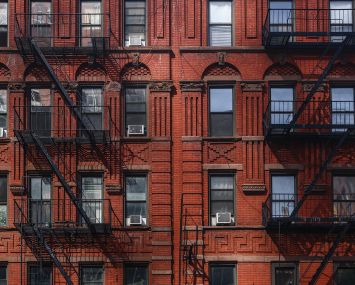Thinking Beyond the Thermostats on Earth Day
By Sophia Valiotis April 22, 2016 10:00 am
reprints
It has been 40 years since President Jimmy Carter famously donned a sweater and turned down the thermostat in the White House, asking Americans to follow his lead. Many criticized him but the message was prescient: Conservation starts in our homes.
Mayor Bill de Blasio, building on the work of his predecessor, has laid out a bold and ambitious environmental sustainability plan, OneNYC, to cut New York City’s carbon emissions by 80 percent by the year 2050. Gov. Andrew Cuomo has laid out similar priorities, targeting a 23 percent reduction of energy consumption from 2012 levels from buildings by 2030 and a 40 percent reduction in total greenhouse gas emissions over 1990 levels by then.
As we mark Earth Day 2016, it is time to take a look at what the real estate community in New York City is able to do towards supporting those objectives and improving our region’s air quality. The real estate industry has been identified as a pivotal player in this effort.
According to OneNYC, nearly 75 percent of greenhouse gas released into the atmosphere in New York City comes from buildings. The fossil fuels used to heat, cool and power the buildings that our city’s residents and workforce inhabit have been shown to be the No. 1 contributor to climate change. There are over a million buildings in the city and, not surprisingly, they consume 94 percent of its energy.
Climate scientists have found that coastal cities such as New York face particular danger, as we saw during Superstorm Sandy. Rising water levels can have potentially devastating effects on our infrastructure, posing a threat to low lying areas of the city.
We witnessed this directly at a three-building residential complex our firm operates in the Rockaways. While everything else on the peninsula was devastated, thanks to resiliency improvements made to the properties, our occupants experienced a recovery that was quicker and more complete than many other buildings along the peninsula.
During and after Superstorm Sandy, stories abounded of tenants, especially many seniors in residential buildings, choosing not to flee the security of their apartments, despite the city asking residents in many waterfront communities to evacuate. The lessons of Sandy, which caused an estimated $20 billion in damage and claimed 40 lives in New York (233 overall), are an all too sobering reminder of the dangers of climate change.
By 2040 the population of New York City is projected to exceed 9 million, requiring an estimated 3.7 million housing units, up from 3.4 million 2014, according to the Rent Guidelines Board. In addition to having the most people of any city in the U.S., New York also has the highest population density of any other American city, according to NYU’s Furman Center.
The owners and managers of tens of thousands of existing buildings will be the ones at the forefront of achieving the important goals of increasing efficiency, sustainability and resiliency. The data show that currently the city’s largest existing buildings represent one-half of all of its total square footage. According to OneNYC, existing buildings in use today will comprise 85 percent of all buildings standing in 2030.
Some one-third of all units in the state were built before 1940; another 50 percent were built between 1940 and 1979. In New York City, about half of all housing units are in buildings of 20 units or more and 70 percent of all units were built before 1960.
This means that while LEED certification for new construction will continue to be the gold standard, in order to make significant progress towards the mayor and governor’s goals, a greater emphasis must be placed on efficiencies among our existing housing stock, as well as commercial properties.
This shows in stark detail the challenges ahead: Combatting climate change in New York City and reaching the benchmarks that have been laid out will require a sharp focus on existing, aging buildings. The real estate industry in New York provides homes for millions and is a significant engine of our economy and it will answer the call.
Sophia Valiotis is chief operating officer of Alma Realty, which manages 12,000 residential units in New York and New Jersey


